The race is on for more EV charging stations at stores, offices and apartments
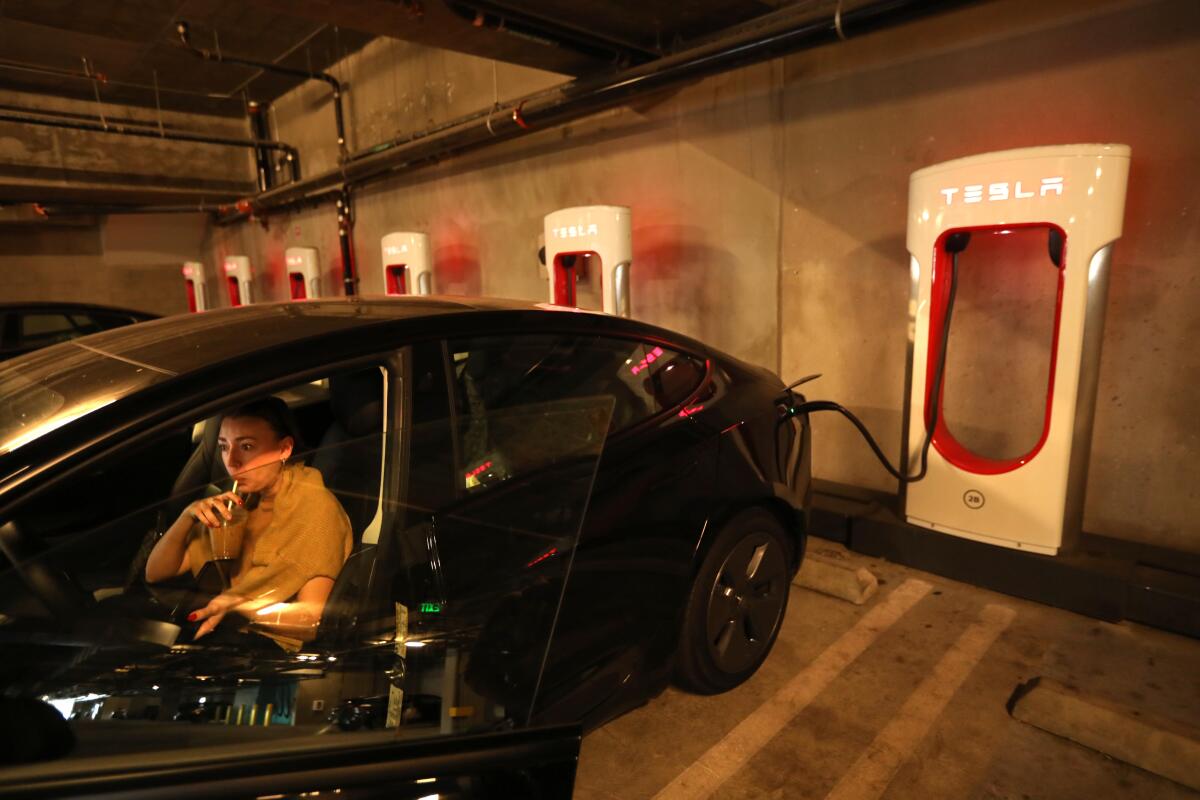
- Share via
When city approval of a proposed $350 million skyscraper in downtown Los Angeles was on the line, project manager Hamid Behdad knew he had to give in to the last-minute demand of a planning commissioner to quadruple the number of electric vehicle charging stations in the condominium tower.
“When you are in the heat of the hearing in the last leg of the proposal, you aren’t going to say no,” Behdad said, even though he thought the requirement was overkill.
Today, with the Perla on Broadway complete and angling for buyers, Behdad said he is “extremely glad that commissioner forced us” to install chargers on 20% of the building’s parking stalls.
“If we didn’t have these 90 chargers, we would be in real trouble selling units,” he said.
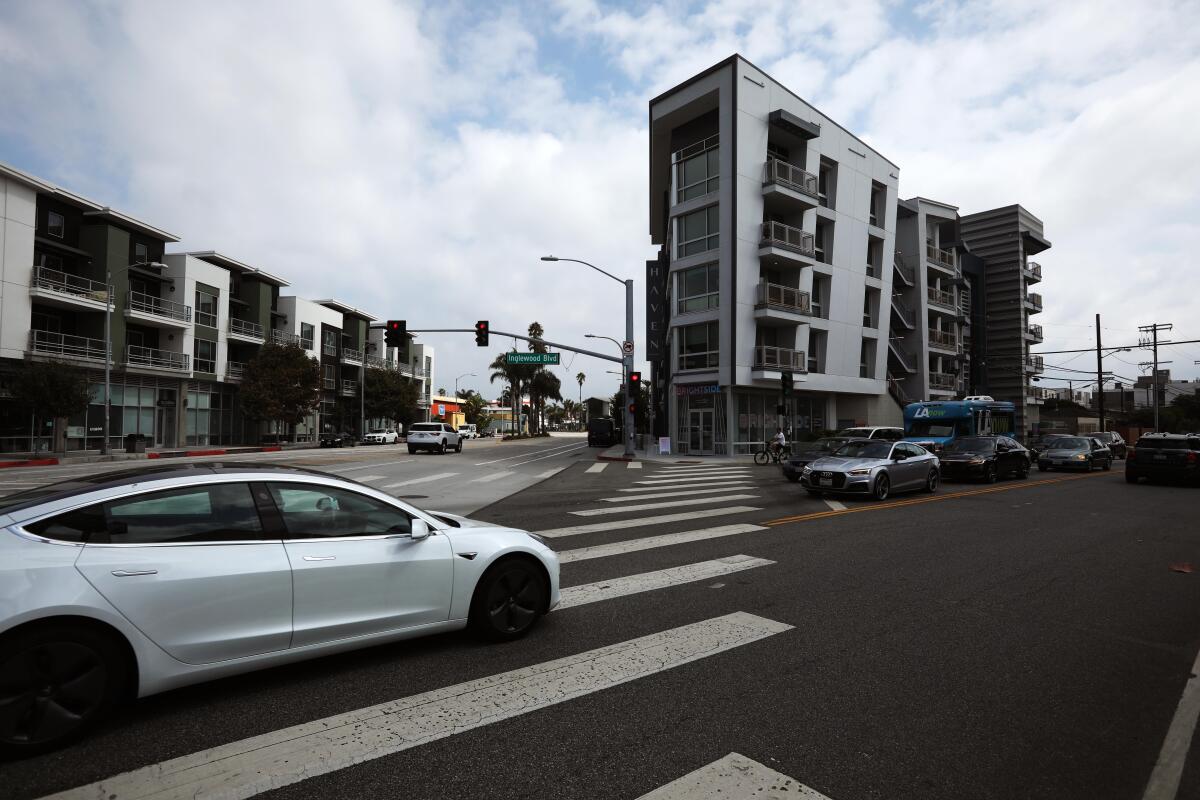
Landlords of apartments, hotels, office buildings and other commercial properties are rushing to avoid similar trouble. And owners of convenience stores, fast food chains, movie theaters and big box retailers are hoping to cash in on EV chargers to lure customers with time to kill as they fill up.
Charging centers are just the first step of commercial landlords scrambling to adjust to a historic burst of change in the world of transportation, with once fantastical notions like autonomous cars and air taxis nearing fruition.
Some companies are building charging centers that are a giant step beyond electrified gas stations. Elon Musk’s Tesla, for instance, is building a whimsical drive-in movie and diner complex in Hollywood where Tesla owners can entertain themselves while loading their batteries.
Fancy L.A. shopping centers such as the Grove and Westfield Century City have chargers, as do the more workaday Walgreens, Walmarts, Subways and 7-Elevens.
Electric air taxis are coming to Los Angeles. The city and FAA will decide if this is a grand new era in transportation or a small novelty for the rich.
The arrival of Tesla’s Model 3 and other more affordable electric vehicles are helping EVs seize market share from gas-powered vehicles, putting more pressure on the historically slow-changing real estate business to get with the times.
The immediate issue is installing enough chargers to meet growing demand and seize business opportunities. But other advances in transportation technology stand to rewrite centuries-old rules about how buildings are designed and built.
When cars no longer spew toxic fumes and can park and drive themselves, hotel and office lobbies might be designed for cars to drop off people inside and go off and do their own thing. In the not-too-distant future when visitors arrive by electric air taxis, buildings might need a second entrance lobby on the roof for the drones to land. Los Angeles officials are planning for such flying vehicles to be operational by the 2028 Olympics and are looking at how to regulate them.
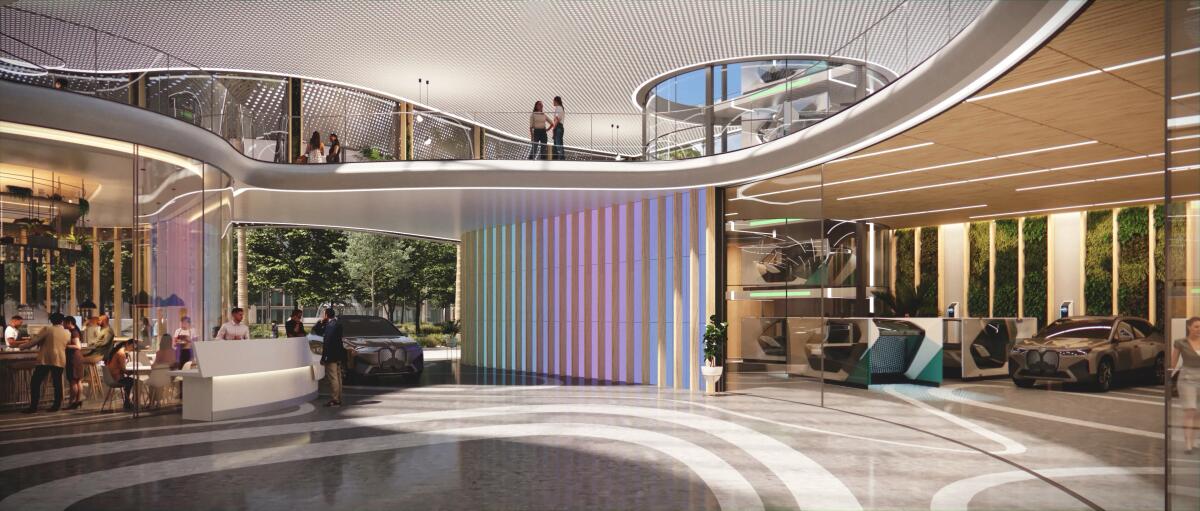
“What happens when you blur boundaries between automobiles and architecture?” said Dylan Jones, a strategic planner specializing in mobility for architecture firm Gensler. “Do you need a garage in the building? Can you sell your car’s energy” to your landlord?
Such technological shifts could require dramatically different building designs, but few developers are looking that far ahead, he said. It’s the nature of the business that typically operates in five-year cycles of building and selling.
“The real estate industry is funny because developers don’t want to speculate about the far future,” Jones said. Developers “want to be able to just peek around the corner and see what’s coming” and be set up to succeed with technology that will exist when the building opens.
Los Angeles developer Walter N. Marks III sees a lure in new technology for a luxury apartment tower he is planning on Wilshire Boulevard with a mechanized parking system that will whisk cars out of sight and charge them if desired.
Tenants will drive their cars onto a movable metal pallet that will quickly park them underground and power up electric vehicles if the resident plugs it in.
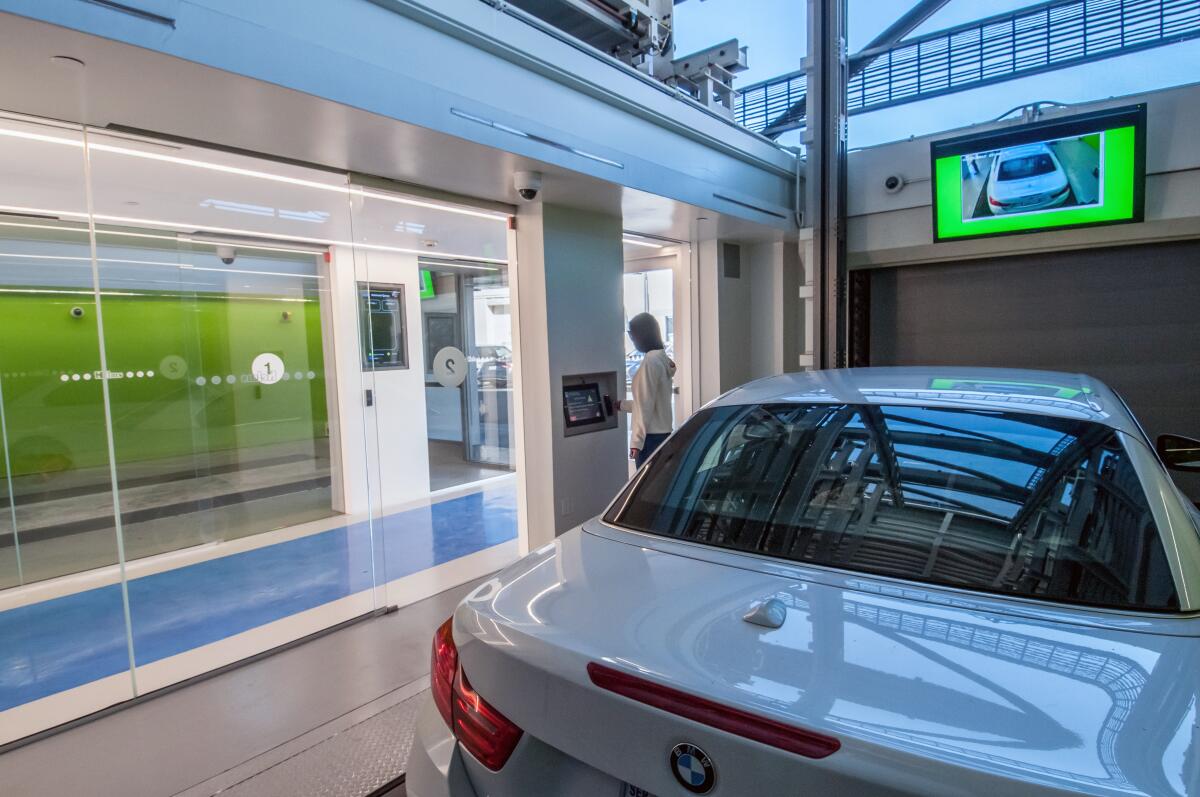
Marks is already operating a mechanized parking system at Helms Bakery District, a historic collection of shops and restaurants his family owns in Culver City. It doesn’t charge cars, but in the future he wouldn’t install a system that didn’t, he said.
All new automobiles and light trucks sold in California will be required to be zero-emission by 2035. The electric age is here. But the autonomous one is less certain. Marks is skeptical of predictions that consumers will give up their private automobiles in the near future and rely on fleets of robot taxis to ferry them about.
“I do believe that the car culture in Los Angeles is unique and very powerful,” he said. “People take their cars extremely seriously, and I think we need to recognize that and honor it.”

Jones thinks attitudes about driving your own car may change quickly when autonomous vehicles are reliably safe and data show that people are more likely to be killed by human-driven vehicles than autonomous ones.
“Drivers will become the smokers of the future; they’ll be socially shunned,” he said. “People will look at them and say , ‘Oh, you drove to work today? My kids are on the street. What are you doing?’”
That era is yet to come. At this point, the push is on among housing developers to provide charging stations to the growing number of tenants demanding them.
Socially conscious housing developer Cityview is rushing to add them to its existing apartments, including a building with only eight units, Chief Executive Sean Burton said.
Cityview usually adds as many stations as existing buildings’ electrical systems can handle, he said. Properties that weren’t constructed with charging in mind are often limited in how much power they can supply to chargers.
“In general I think building owners are adopting more slowly than they should,” Burton said. “We try to be more leading edge on sustainability issues.”
An apartment management company that manages 76,000 units for various owners is racing to meet rising demand in part by retrofitting garage electrical outlets to handle 210 volts for Level 2 charging, said Jackie Impellitier, vice president of operations for ZRS Management. That is the common commercial system for charging that takes about three to eight hours. The price of charging is added to tenants’ electrical bills.
“The thing we are all acknowledging is having charging stations is no longer an amenity, it’s a necessity” to attract and keep tenants, she said. “We are going to start losing renters if we don’t have easy and convenient access” to charging.
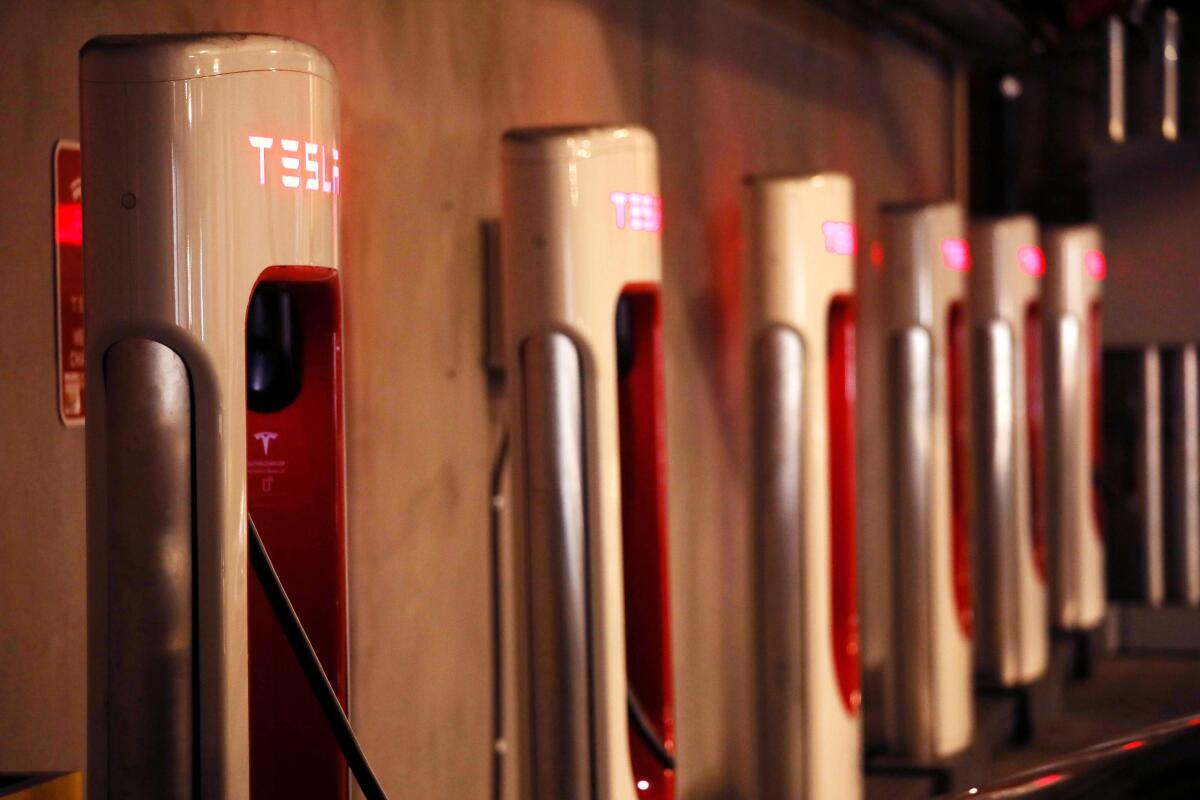
Most apartment developers and owners “weren’t even paying attention to EV drivers” as a category of tenants five years ago, Impellitier said, when Tesla stood practically alone as the provider of electric vehicles. “Now, every carmaker has an electric model.”
Charging stations are commonly installed and operated by third-party vendors. The big expense for landlords is getting sufficient electricity to garages and parking lots to support Level 2 charging. (The lower Level 1, plugging into a common 120-volt electrical outlet, can take more than a day if you’re charging from empty).
Level 3 chargers that can charge a car sufficiently in as little as 20 minutes run on at least 400 volts. They are expensive to set up and require electrical infrastructure not typically found in residential buildings
Automotive data provider S&P Global Mobility estimated in January that there are about 126,500 Level 2 and 13,487 Level 3 commercial charging stations in the United States today, plus another 16,822 Tesla Superchargers and Tesla destination chargers. The number of chargers grew more in 2022 than in the preceding three years combined, S&P said.
Among them are chargers at fast-food and other convenience businesses that hope customers buy things while their cars charge. Earlier this year 7-Eleven Inc. said it intends to build one of the largest fast-charging networks of any retailer in North America and already has chargers in four states, including California. Drivers pay through a phone app.
“7-Eleven will have the ability to grow its network to match consumer demand and make EV charging available to neighborhoods that have, until now, lacked access,” the company said in a statement.
Sandwich maker Subway is rolling out a variation on the theme — charging “parks” with multiple charging stations that also happen to have restaurants. These Subway Oasis charging parks will have picnic tables, Wi-Fi, restrooms, green space and playgrounds, the company said. They’ll be rolled out across the country at new or newly remodeled locations
Drug store chain Walgreens claims to be “the nation’s largest retail host” of chargers with more than 430 locations offering them. Other household-name retailers installing chargers include Ikea, Kohl’s, Walmart, Starbucks, Whole Foods, Taco Bell and theater chain Cinemark.
Additional concepts for charging stations with retail services intended to attract customers with time to kill are emerging.
Tesla, the giant of the EV industry with a growing network of fast chargers, is rolling out what it calls a supercharger diner and drive-in theater in Hollywood that promises an “American Graffiti” style pit stop for Tesla drivers perhaps running 24 hours a day.
Tesla is constructing the charging and entertainment complex on Santa Monica Boulevard — historic Route 66 — near a trendy stretch of Sycamore Avenue that has celebrity-favored restaurants, upscale shops and art galleries.
The car maker paid $16.7 million last year for a corner lot at Orange Drive where a shuttered Shakey’s Pizza Parlor was demolished to make way for the two-story project that could become an iconic venture for Tesla. The plan calls for a restaurant and two movie screens showing features that last half an hour, roughly the time it takes to charge a vehicle.
The complex is to have 29 fast superchargers and five Level 2 chargers available around the clock, while the theaters, visible from both cars and rooftop seating, would operate from 7 a.m. to 11 p.m. A screen of bamboo would shield Tesla’s movies from the street.
On the I-15 freeway between L.A. and Las Vegas, the developers of a charging station set to open in January expect to charge around 10,000 vehicles per month. The 24-hour outpost will have 40 fast charging station around a yet-to-be-announced nationally known coffee seller, said Lester Ciudad Real, co-founder of StackCharge, which is developing the project near a freeway exit in Baker.
The opportunity to charge while parked at the office has also emerged as a must for tenants. A recent survey by real estate brokerage JLL found that tenant-demanded clauses calling for charging were among the least likely to be included in existing office space leases signed in years past but would be the top priority in future negotiations.
But office building owners are stuck trying to strike the right balance. They must keep up with growing demands without overspending on chargers that aren’t needed yet, said Rex Hamre, national director of sustainability for JLL. It’s usually easy to add up to 10 stations, but trying to make even 20% of the spaces charge-ready in a 600-car parking facility could incur steep costs for electrical infrastructure.
“We are still at the cutting edge of this transition,” Hamre said. “Innovative companies are taking advantage of it as an opportunity.”
EV refueling could lead to changes in how cities look in ways that have yet to be fully imagined, architect Jones said. Gas stations in prime urban locations could give way to hybrid buildings with coffee bars, co-working offices and meeting rooms, built around indoor charging points.
“Word Perfect made typing easier, and then computers became more ingrained and it did things a typewriter could never do,” Jones said. “We’re in the early stages where the first EV charging infrastructure we’re seeing is a replication of what we understand is a refueling station. But in the future they’re going to look and feel much different.”
More to Read
Sign up for Essential California
The most important California stories and recommendations in your inbox every morning.
You may occasionally receive promotional content from the Los Angeles Times.











